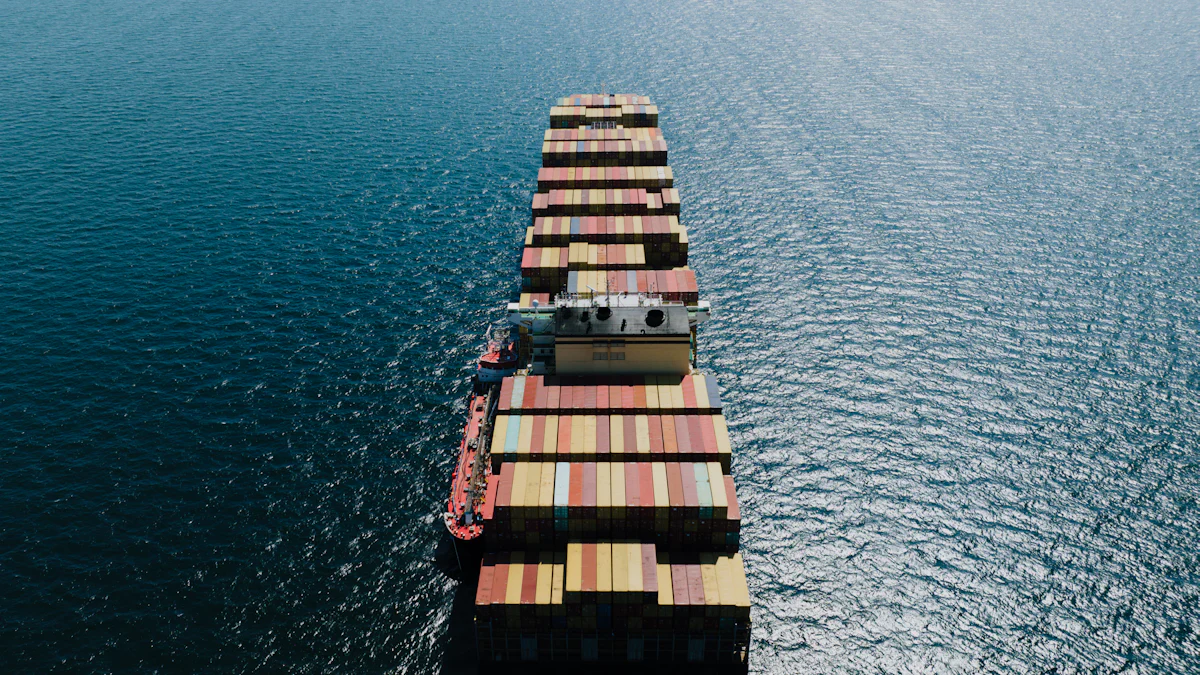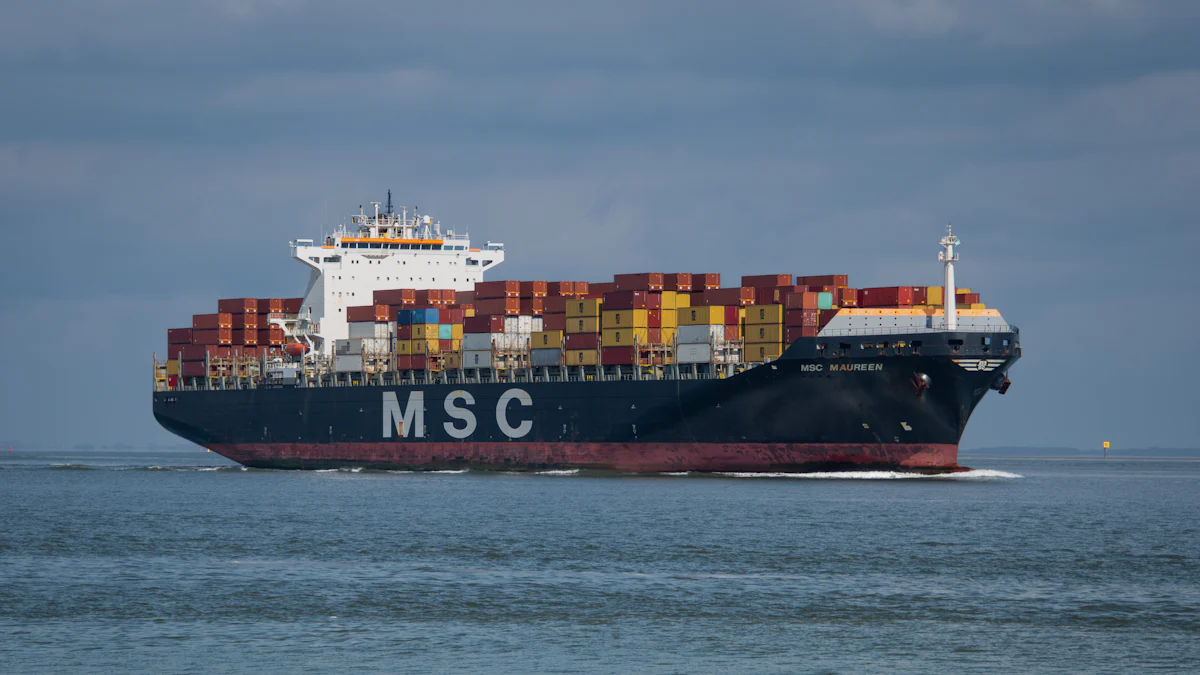2024 Ocean Freight Market Dynamics: What to Expect

The Ocean Freight Market plays a vital role in global trade. Over 80% of all goods are carried by sea, making maritime shipping the backbone of world commerce. Understanding market dynamics helps stakeholders navigate this complex sector. Accurate insights into future trends and forecasts provide businesses with the tools needed to adapt and thrive.
Current State of the Ocean Freight Market

Overview of 2023 Performance
Key Statistics and Trends
The Ocean Freight Market experienced significant fluctuations in 2023. Volumes at USWC ports increased by approximately 20% compared to the same period in 2022. However, reduced demand and oversupply intensified competition, leading to lower profits. The North American intermodal market showed strong volume growth, with an 8% year-over-year increase through March. Despite these positive trends, volatility remained high, and freight rates did not stabilize.
Major Challenges Faced
The Ocean Freight Market faced several challenges in 2023. Port congestion continued to disrupt schedules, causing delays and increasing operational costs. Labor shortages and strikes further exacerbated these issues. Additionally, geopolitical tensions and trade wars created uncertainty, impacting shipping routes and costs. Environmental regulations also posed challenges, requiring investments in cleaner technologies and compliance measures.
Impact of Global Events
Economic Factors
Economic factors played a crucial role in shaping the Ocean Freight Market in 2023. Inflationary pressures increased operational costs, affecting profitability. Fluctuations in fuel prices added to the financial burden on shipping companies. Global economic slowdowns reduced consumer demand, leading to lower shipment volumes. Currency exchange rate volatility also impacted international trade dynamics.
Geopolitical Influences
Geopolitical influences significantly affected the Ocean Freight Market. Trade policies and tariffs, such as those from the U.S.-China trade war, disrupted traditional shipping routes. Companies sought alternative markets and nearshoring options to mitigate risks. Countries like Mexico and Vietnam benefited from this shift, experiencing increased ocean freight volumes. Political instability in key regions further complicated logistics and supply chain management.
Technological Advancements
Innovations in Shipping Technology
Technological advancements revolutionized the Ocean Freight Market in 2023. The integration of AI and big data analytics enhanced supply chain efficiency and reliability. Technologies like the "Maritime Dynamic ETA Algorithm" improved port arrival predictions and early warning systems for potential disruptions. Autonomous ships and drones began to emerge, promising to reduce labor costs and increase operational efficiency.
Digitalization and Automation
Digitalization and automation transformed the Ocean Freight Market. Blockchain technology improved transparency and security in shipping transactions. Automated warehouses and robotic systems optimized cargo handling and storage. Digital platforms facilitated better communication and coordination among stakeholders. These innovations streamlined operations, reduced errors, and improved overall service quality.
Key Factors Influencing 2024 Market Dynamics
Supply Chain Disruptions
Causes and Effects
Supply chain disruptions will continue to impact the Ocean Freight Market in 2024. Natural disasters, geopolitical tensions, and labor strikes often cause delays and rerouting of shipments. These disruptions result in increased operational costs and reduced efficiency. Companies may face difficulties in meeting delivery schedules, leading to customer dissatisfaction.
Mitigation Strategies
To mitigate supply chain disruptions, companies must adopt proactive strategies. Diversifying supply sources can reduce dependency on a single region. Implementing advanced tracking systems can provide real-time visibility into shipment status. Building stronger relationships with logistics partners can enhance coordination and response times. Investing in technology and automation can also streamline operations and improve resilience.
Regulatory Changes
Environmental Regulations
New environmental regulations will significantly influence the Ocean Freight Market. The International Maritime Organization (IMO) has introduced stricter rules to reduce carbon emissions from ships. Compliance with these regulations requires investments in cleaner technologies and alternative fuels. Shipping companies must also adhere to the International Convention for the Prevention of Pollution from Ships (MARPOL) Annexes I, II, V, and VI, which have been incorporated into U.S. law.
Trade Policies
Trade policies will shape the Ocean Freight Market in 2024. The U.S. has expanded export controls on sensitive technologies, affecting international trade dynamics. Mexico requires electronic documentation for all goods transported within its borders to ensure regulatory compliance. These policies necessitate adjustments in shipping routes and documentation processes. Companies must stay informed about changes in trade policies to avoid disruptions and penalties.
Market Demand and Supply
Consumer Behavior Trends
Consumer behavior trends will drive demand in the Ocean Freight Market. E-commerce growth continues to increase the volume of goods shipped globally. Consumers expect faster delivery times, putting pressure on shipping companies to optimize their operations. Sustainability concerns are also influencing consumer preferences, leading to a demand for eco-friendly shipping options. Companies must adapt to these trends to remain competitive.
Capacity and Fleet Management
Effective capacity and fleet management will be crucial for the Ocean Freight Market. The global containership fleet is projected to grow by 6.8% in 2024, with a record high ship delivery capacity. Managing this increased capacity requires strategic planning and investment in new vessels. Companies must also focus on maintaining and upgrading existing fleets to meet regulatory standards. Efficient fleet management can help control costs and improve service quality.
Future Forecasts and Predictions

Expert Opinions
Industry Leaders' Insights
Industry leaders foresee significant shifts in the Ocean Freight Market for 2024. Many experts predict a continued focus on sustainability and technological advancements. Shipping companies will likely invest heavily in eco-friendly technologies to comply with stricter environmental regulations. The integration of AI and big data analytics will further enhance operational efficiency. Industry leaders emphasize the importance of adapting to these changes to remain competitive.
Analyst Predictions
Analysts predict a growth rate of around 5% in the first half of the year. This aligns with Accenture Cargo's forecast. The second half may see more stability, with rates leveling off. BIMCO projects a modest increase of 3% to 4% in global container volumes. The Asia Pacific region will likely lead this growth. According to Container xChange's 2024 report, the forecast of “reduced demand and oversupply” could trigger intense competition, reduced profits, and potential mergers and acquisitions. BIMCO’s projection aligns with this, anticipating continued weakening in 2024 and 2025, driven by the forecasted 8.4% annual growth in supply outpacing demand.
JUSDA Ocean Service
Get More Information From JUSDA
Scenario Analysis
Best-Case Scenario
In the best-case scenario, the Ocean Freight Market will experience balanced growth and stability. Technological advancements will streamline operations, reducing costs and improving service quality. Environmental regulations will drive innovation, leading to more sustainable shipping practices. Companies that adapt quickly will gain a competitive edge. Trade policies will stabilize, allowing for smoother international trade flows.
Worst-Case Scenario
In the worst-case scenario, the Ocean Freight Market will face significant challenges. Reduced demand and oversupply will intensify competition, leading to lower profits. Geopolitical tensions and trade wars will disrupt traditional shipping routes. Compliance with stricter environmental regulations will increase operational costs. Companies that fail to adapt may face financial difficulties or even bankruptcy.
Strategic Recommendations
For Shippers
Shippers should focus on diversifying supply sources to mitigate risks. Investing in advanced tracking systems can provide real-time visibility into shipment status. Building strong relationships with logistics partners can enhance coordination and response times. Embracing digitalization and automation will streamline operations and improve resilience. Shippers must stay informed about regulatory changes to avoid disruptions and penalties.
For Carriers
Carriers should invest in eco-friendly technologies to comply with environmental regulations. Optimizing fleet management will be crucial to handle increased capacity. Leveraging AI and big data analytics can enhance operational efficiency. Carriers must also focus on maintaining and upgrading existing fleets to meet regulatory standards. Building strong relationships with shippers and other stakeholders will improve service quality and customer satisfaction.
The 2024 Ocean Freight Market will face numerous challenges and opportunities. Key factors include supply chain disruptions, regulatory changes, and evolving market demand. Staying informed and adaptable remains crucial for stakeholders. Leveraging technological advancements and strategic planning will enhance resilience. Navigating the complexities of the market requires a proactive approach. Success hinges on the ability to anticipate trends and respond effectively.
See Also
Insight into Sea Freight Logistics: 2024 Innovations
Understanding the Effects: Trends in Logistics Risks
Prospects for LTL Freight: An In-depth Examination
Enhancing Supply Chain Productivity: 5 Key Trends
Prepared for Change? Investigating New Transport Tech for Supply Chains
